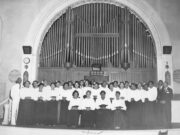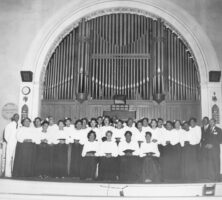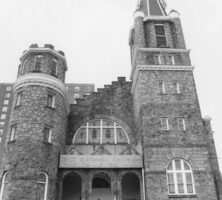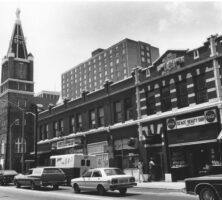Part of the Sweet Auburn district, Big Bethel African Methodist Episcopal Church is believed to be the oldest predominantly African American congregation in the metropolitan Atlanta area. A pillar of the Auburn Avenue community, the church is known nationally and internationally for its religious pageant, Heaven Bound.
Founding
Big Bethel AME has congregational roots dating back to 1847. The original congregation was made up of enslaved men and women who were given permission to worship in the white Union Church. Members selected the name Bethel Tabernacle when construction was completed on their first church building in 1855. During the Civil War (1861-65), Bethel Tabernacle was used as a smallpox hospital. After the war, as African Methodism spread throughout the South, the church offered classes to newly freed African American children. In 1866 Bethel Tabernacle, led by the Reverend Joseph Wood, joined the African Methodist Episcopal Church (AME Church) organization.
Church Buildings
In 1868 construction on a second church building, located at the corner of Wheat Street (later Auburn Avenue) and Butler Street (later Jesse Hill Jr. Drive), was completed under the leadership of the Reverend Wesley John Gaines. This building, referred to as “Old Bethel,” was located next door to the present church building. Various benevolent societies, including the Daughters of Bethel Benevolent Society (1870) and Independent Daughters of Bethel (1880), were organized in this building, which also served as home to Gate City Colored School (1879), the first public school for African Americans in the area, and to Morris Brown College (1881).
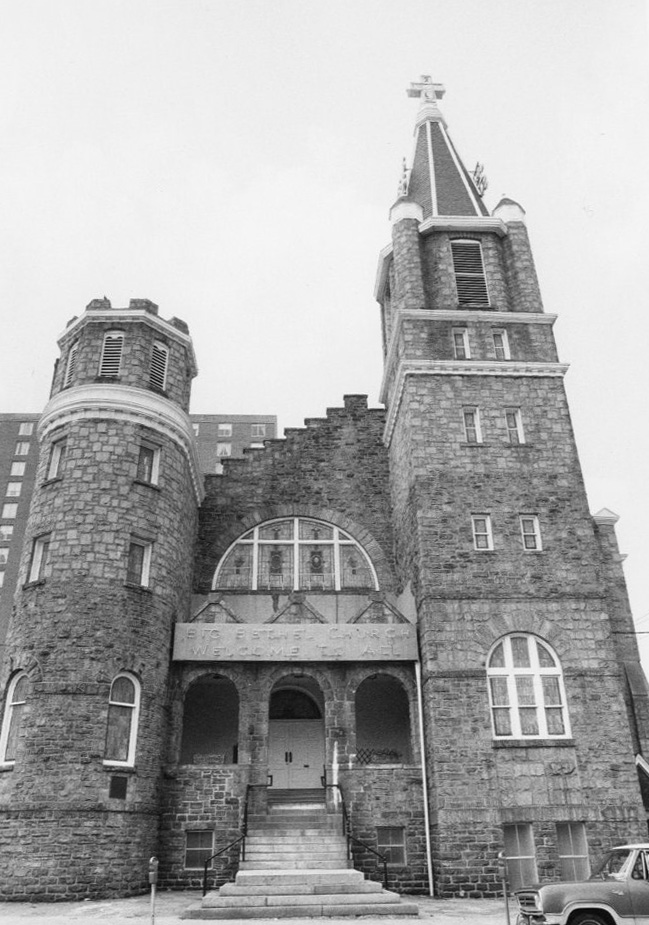
Courtesy of Archives Division, Auburn Avenue Research Library on African American Culture and History, Atlanta-Fulton Public Library System
The third church building, christened Big Bethel, was a Victorian structure completed in the late 1880s, but it fell victim to fire in 1923 and was later condemned. The church was redesigned in the Romanesque Revival style by African Americans J. A. Lankford and Alexander Hamilton, who served as architect and builder respectively. It was during this reconstruction that the prominent cross with the words “Jesus Saves” was installed atop the steeple. Because Big Bethel’s building insurance had expired the day before the 1923 fire, various endeavors were undertaken to raise the money needed to pay off former building debts and to rebuild. One of these fund-raisers was the religious pageant Heaven Bound, which brought Big Bethel national and international recognition and acclaim.
Twentieth-Century Challenges
The church experienced significant growth during the 1930s as families migrated from rural areas to the city. In order to address the continued indebtedness brought on by rebuilding the church and the additional challenges of the Great Depression, Big Bethel continued to offer performances of Heaven Bound to packed audiences. Choirs from the church also performed in 1939 at the world premiere in Atlanta of the film Gone with the
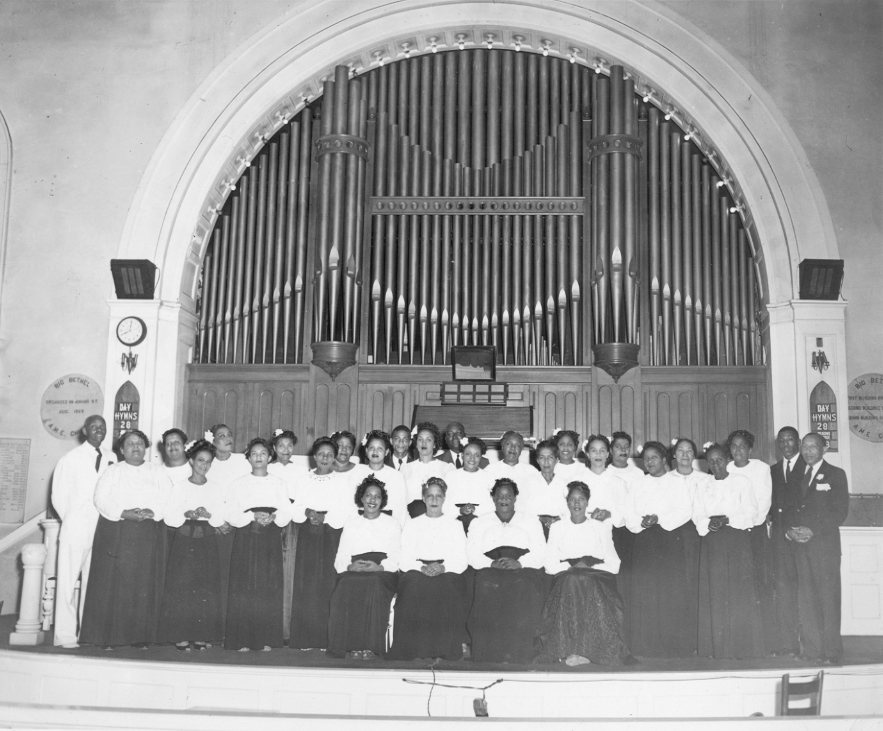
Courtesy of Archives Division, Auburn Avenue Research Library on African American Culture and History, Atlanta-Fulton Public Library System
During the 1950s Pastor Harold Irvin Bearden worked to keep the congregation together, as portions of the city’s Black population migrated to the west side of Atlanta. Bearden’s passionate sermons were broadcast on Atlanta’s WERD, the nation’s first radio station to be owned by an African American, and under his leadership the church moved to the forefront of the civil rights movement. During the 1960s Pastor Ruben T. Bussey oversaw the construction of “Bethel Towers,” a complex of 135 low-income housing units situated on the lot that had formerly been home to the “Old Bethel” church building. The complex opened in 1972.
As African American residents and businesses continued to move out of the Auburn Avenue district during the 1970s and 1980s, Big Bethel also experienced a decline in the size of its congregation. Despite this fall in numbers, the church and its members remained active in the local community. Under the leadership of the Reverend McKinley Young, Big Bethel used its ministries to help those in need of food and clothing, as well as those in prison. The church’s interior and exterior, as well as its fifty-six-year-old Moller organ, were completely refurbished in the mid-1980s.
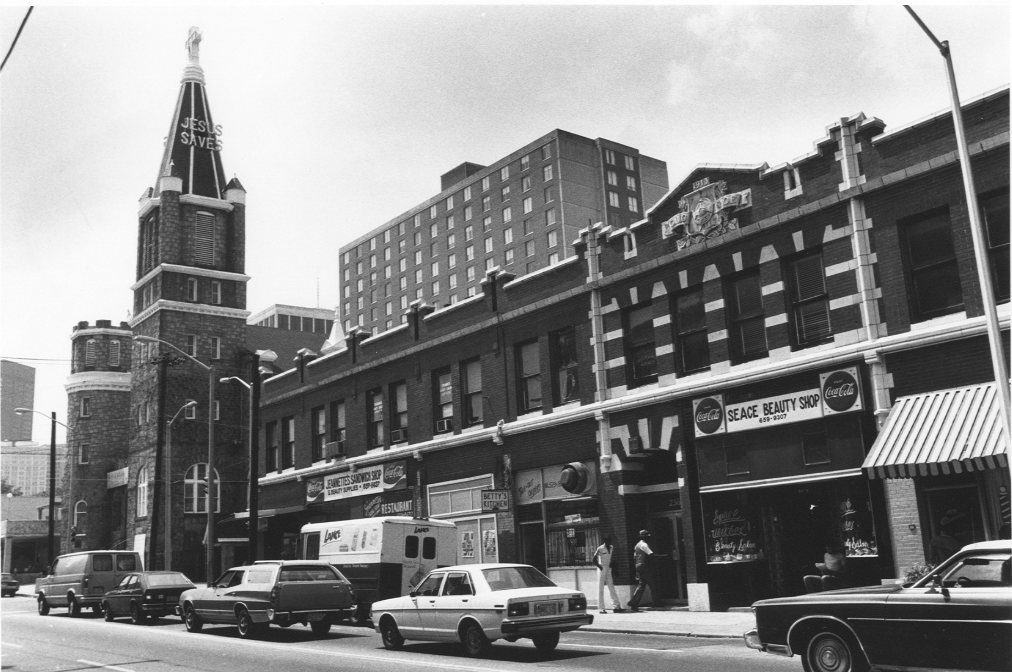
Courtesy of Archives Division, Auburn Avenue Research Library on African American Culture and History, Atlanta-Fulton Public Library System
During the 1990s and 2000s, despite the changes taking place around it, Big Bethel worked to maintain the Sweet Auburn district. One way the church did so was by purchasing land on Auburn Avenue in order to preserve the district’s historical integrity. In the early 2000s, Big Bethel, under the leadership of the Reverend James Davis, worked with architect J. W. Robinson on another renovation of the church’s historic sanctuary.
Throughout its long, dynamic history, Big Bethel has hosted a variety of well-known speakers, including U.S. president William Taft, education leader Mary McLeod Bethune, Georgia governor (later U.S. president) Jimmy Carter, South African president Nelson Mandela, and (future) U.S. president Bill Clinton. The church continues to fulfill its mission of providing spiritual guidance to its congregation while also playing a key role in the economic development and historic preservation of the Sweet Auburn neighborhood.


